Attention Economy Fatigue: Rethinking How Brands Compete for Focus
Marketers sense it in the numbers long before users say it out loud. Click-through rates stall, creative wears out faster, and brand recall softens even as impressions climb. The phenomenon has a name in the literature: attention economy fatigue. Below is a synthesis of recent peer-reviewed findings and policy analyses, with clear implications for marketing strategy.
What scholars are finding
Overload drives disengagement and flight.
A 2024 study on platform behavior shows that information and communication overload doesn’t just lessen engagement. It leads users to switch platforms entirely, which undermines channel stability and tracking of user groups. The authors find that overload factors strongly predict intentions to switch platforms. This suggests that having “more reach” in a cluttered environment can lead to audience turnover rather than increased conversions.
Ad fatigue changes the optimal spending curve.
Research on dynamic advertising policy models shows that when consumers experience fatigue, the best response is not to compete loudly with rivals but to reduce spending across periods. In simpler terms, the best strategy levels the spending path as fatigue increases, because returns drop faster with repetition. For marketers, this means pacing delivery and rotating creative content is better than just increasing frequency.
Young users show fatigue that decreases exposure time.
A 2024 journal article examining brand activity on social platforms links pressure to post from brands to social media fatigue among younger users. This leads to less time spent on platforms and lower interaction rates. The paper presents fatigue as a factor related to the brand, rather than just a user issue. This distinction matters when deciding how often to post and what engagement targets to set.
Wearout and clutter still reduce memory.
The classic issue of advertising wearout remains true in digital contexts: clutter lowers recall and increases avoidance. Recent experimental studies confirm that as avoidance increases, visual attention to ads decreases, and memory encoding suffers. This is particularly true when ads interrupt important activities like reading or shopping. The takeaway is that “being seen” does not equal “being processed.”
Multitasking complicates the fatigue story.
A 2025 investigation into media multitasking reports a nuanced result: self-reported multitasking is not uniformly more fatiguing than sequential consumption in proximal, controlled tasks. That finding urges caution in attributing all attention failures to multitasking per se and suggests that context and task design matter. Related literature still links heavy multitasking to poorer sustained attention in everyday life, which helps explain why broad campaigns lose depth of processing even when formats are viewable.
Macro costs are becoming measurable.
A 2025 policy paper from France’s Treasury synthesizes attention-economy externalities and estimates long-run productivity and mental-health drag from attention capture dynamics. While macro estimates require caution, the direction is unambiguous: business models that monetize persistent distraction create costs that users and society eventually price in, often as reduced tolerance for intrusive marketing.
Market evidence of declining ad grip.
Industry tracking aligns with the academic picture. Kantar’s 2024 Media Reactions notes a drop in the share of people who say social ads capture attention year over year, a signal that creative novelty and context fit, not raw volume, determine marginal effectiveness.
Theoretical reframing of “attention as capital.”
A 2025 article in Interacting with Computers argues that attention can be accumulated and exchanged across institutions, not just captured in moments. This reframing implies marketing programs should optimize for durable attention assets such as trust, habit, and utility, rather than microbursts of exposure.
The practical implications
- Frequency is not a free lever. If fatigue reduces the return on each additional impression, frequency caps and spaced delivery are not just good practices. They can help increase profits. Use pacing that considers fatigue in programmatic buys and pay attention to the shape of the frequency-to-conversion curve. The results from dynamic control support smoother spending instead of sudden increases when early signs of fatigue show up.
- Design for cognitive fit, not just viewability.
Experiments that focus on attention during tasks reveal that interruptions hurt memory. Create ad experiences that match the user’s goals on the page. Native, assistive, and sequenced formats that minimize task disruption will perform better than noticeable interruptions in a crowded space. - Treat overload as a brand variable.
Posting more does not mean it has no impact. For younger users, brand activity can lead to fatigue and shorter session times. Set posting schedules based on what your audience can handle, not just your internal timelines. Combine these scheduling decisions with quality controls that ensure each post provides useful or emotional value. - Measure attention that predicts outcomes.
Change from just looking at viewability to assessing attention factors that include on-screen time, audibility, scroll speed, and interaction signals. Then, check which attention elements are linked to brand searches and direct traffic each week. The aim is to identify the part of attention that closely relates to memory and intent, not simply to maximize an overall score. - Design for answer surfaces, not just feeds.
As users move away from cluttered feeds, they look for spaces that simplify decision-making. Invest in content structures that provide clear answers, distinct data, and easy-to-use tools. This approach lowers cognitive load and helps avoid fatigue by addressing intent quickly. - Build lasting attention assets.
If attention acts like a valuable resource, budget for programs that build it up: owned communities that are helpful, repeatable editorial series, customer education, and service content that is easily found by answer engines. This is not just brand-building at the top of the funnel. It creates lasting attention that reduces future acquisition costs.

